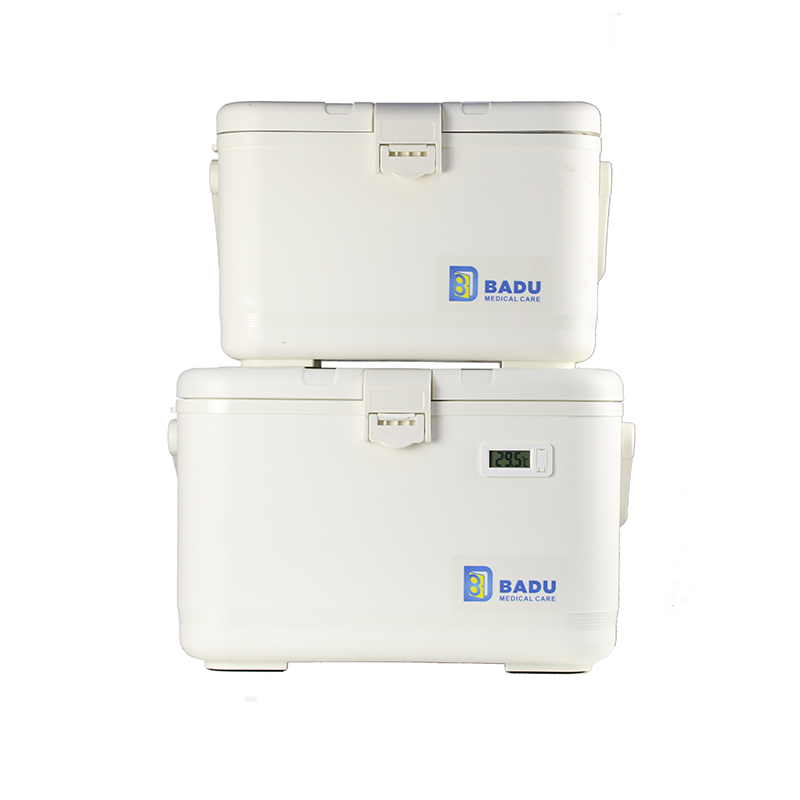 How much do you know vaccine carrier and cold box?
How much do you know vaccine carrier and cold box?
Oct 06, 2023
Vaccine carriers are insulated containers that, when lined with coolant packs, keep vaccines and diluents cold during transportation. Vaccine carriers are smaller than cold boxes and are easier to carry when walking.
These products are used for transporting vaccines from health facilities with refrigeration to outreach immunization sessions where refrigeration and ice are not available. Vaccine carriers are typically carried by a single health worker travelling on foot or by other means, where the combined journey time and immunization activity may range from a few hours to a whole day.
The vaccine storage capacity of vaccine carriers is between 0.8L to 10 liters.
Vaccine carriers can be grouped into two range cold life:
Short range: With a minimum cold life of 15 hours at 43°C ambient temperature.
Long range: With a minimum cold life of 30 hours at 43°C ambient temperature.
Cold boxes are insulated containers which are lined with coolant packs to keep vaccines and diluents cold during transportation and/or short period storage. Cold boxes are used to collect and transport vaccine supplies from one vaccine store to another, and from vaccine stores to health facilities. These products are also used to temporarily store vaccines when the refrigerator is out of order or being defrosted.
The vaccine storage capacity of cold boxes is between 10L and 25 liters.
Cold boxes can be grouped into two range cold life:
Short range: With a minimum cold life of 48 hours at 43°C ambient temperature.
Long range: With a minimum cold life of 96 hours at 43°C ambient temperature.
A vaccine carrier and cold box are used to transport and store vaccines and other temperature-sensitive medical products at the required temperature range. Here's how they work:
1: Insulation: The cold box is made of materials that provide insulation, such as polyurethane foam. This insulation helps to minimize heat transfer between the internal and external environments.
2: Cooling system: The cold box incorporates a cooling system to maintain the desired temperature inside. This system can be one of the following types:
Active cooling: It uses a compressor-based refrigeration system similar to a household refrigerator. The compressor circulates a refrigerant, which absorbs heat from inside the cold box and releases it outside, thereby keeping the temperature low.
Passive cooling: It relies on pre-frozen ice packs or dry ice to maintain the desired temperature. These frozen elements are placed inside or around the vaccines to keep them cold. The insulation in the cold box helps to slow down the melting or sublimation of the ice packs or dry ice.
3: Temperature monitoring and control: The cold box may have a built-in temperature monitoring and control system. This system includes sensors to measure the internal temperature and a control mechanism to adjust the cooling or heating elements as needed. It ensures that the temperature remains within the acceptable range to preserve the efficacy of the vaccines.
4: Power supply: The cold box can be designed to operate on different power sources depending on the specific application. It may have a built-in rechargeable battery or be connected to an external power source, such as a mains power outlet or a vehicle power supply.
By combining insulation, cooling systems, temperature monitoring, and power supply, the vaccine carrier and cold box provide a controlled environment for vaccines and medical products during transportation and storage. This helps to prevent temperature excursions that could degrade the quality and effectiveness of the vaccines, ensuring that they remain viable and safe for administration.
Read More
 Badu(Xiamen) Technology Co., Ltd
Badu(Xiamen) Technology Co., Ltd
 How much do you know vaccine carrier and cold box?
How much do you know vaccine carrier and cold box?